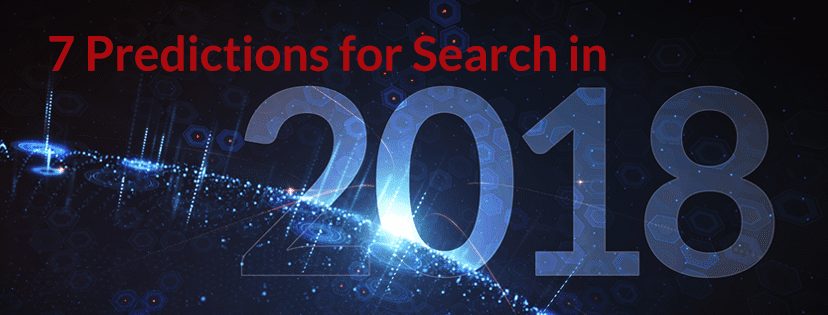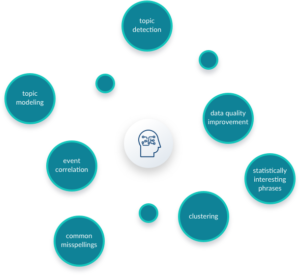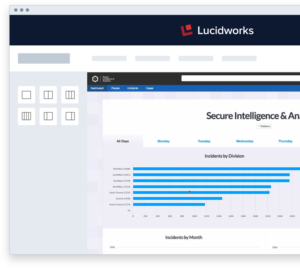7 Predictions for Search in 2018

It wasn’t long ago that search technology was stagnant. The hard problems back then were data connectivity and import. Search teams might still struggle with these challenges for specific projects, but they are broadly solved from a technology standpoint. The next set of problems are about language parsing, how to stem words and match up to keywords, phrase matching, and faceting. There is always another tweak, but nearly every search product on the market does those things.
In recent times, search technology came alive with open source technology that allowed it to scale to big data sizes and brought web-scale to every company that needed it. However, as technology has progressed and the amount of data increased, so has our need to find the information we need in a mountain of data. Search technology is exciting again and here are the changes we can expect to see in the coming year!
Personalization becomes extreme
The new frontiers are not in connecting to yet another datasource or how to chop up a word or sentence. The new challenge is to match the results to the person asking the question. Doing this requires gathering more than a collection of documents and terms. It means capturing human behavior and assembling a complete user profile. That profile may be related to their profession (accounting vs sales/marketing vs engineering). That profile may be related to their past searches or purchases. This capability is moving past vendors like Amazon and Google. Other retailers are now incorporating this technology, we can expect to see this find its way into enterprise search applications.
Search gets more contextual
Who I am, what I’ve done, and what I want are “personalization.” Where I am in terms of geography, mobile phone provide location or in what part of an application is “context.” Up until now, web applications that provide search tend to provide a simple context-less search box.
However, the bar is being raised. If you ask your mobile device to provide a list of restaurants you don’t mean “in the whole world,” you want “around me and open right now.” Meanwhile, while working all day on one customer account, when you type “contracts” or “contacts” into any corporate search bar, in most enterprise search applications you get back a list of all documents that have those keywords. That’s “dumb” and search should be smarter and show you files related to the account you’ve been working on all day. The capability is there and this year users are going to start to expect it.
Applications become search-centric
Companies tend to deploy their applications and then add in some kind of “search portal” or series of search applications that are functionally separate to try and tie the search experience and the app experience back together. This requires a lot of the user, they have to context-switch and go back to a different site. To minimize this friction, search is getting integrated into the core of most applications. Whether it be traditional stalwarts like your CMS or CRM or newcomers like Slack, search is no longer an afterthought, it is the main way to interact with the application. In 2018, this will become more of an expectation of internal- and customer-facing applications as well regardless of their use case.
Machine learning becomes ubiquitous
So much of what we do as human beings is grouping things together because they look somehow similar (clustering) and sorting things into categories (classification). So many business problems are one of projecting based on trends (regression). Search has long been used to group stuff together and finding that stuff has often meant dividing it up into classes. What is different is that we can automate that.
However, it goes beyond this. In an era of rampant fraudulent news, reviews and transactions, Machine Learning allows a search enginer to sort through to the most relevant and most real results. This isn’t a nice to have anymore for most retailers, financial services or customer service sites.
In healthcare and insurance industry similar types of diagnosis, claims, and notes can automatically be grouped. Across the board, as a user’s profile is filled out recommendations for that user or for similar items are a necessity in an era where there is more data than information.
Migration to the cloud begins in earnest
The sky is falling! Cloud, ho! Many organizations will cease to run their own data centers. If you make pizzas, you should just do that, not deploy servers all over the planet. With that said, there are legal and technical barriers that have to be overcome before we’re all serverless. Because search is needed behind the firewall as well as in the cloud, for some time we’ll see on-premise and hybrid solutions more commonly than all cloud. With that said, the weather report for 2018 is a partly cloudy when it comes to search. Expect fewer pure on-premise deployments as more companies turn to hybrid and cloud search installations.
Search application development becomes a solved problem

In 2017, most search application developers were still writing yet another web search box with typeahead and facets from the ground up. Forget some of the more advanced features that you can implement, if you’re still hand coding basic features step-by-step, you’re not getting to the finish line very quickly. Most basic features and capabilities for search applications have already been written and the components are out there pre-coded for you. Savvy developers will start to use these pre-written, pre-tested components and frameworks and make their tweaks where necessary rather than reinventing the wheel every time. In 2018, we’ll see the end of from-scratch search applications at least for standard and mobile websites.
Single Service Solutions will start to abate
This year there were a lot of “new” and “old but reimagined” search solutions that were aimed at just one task. For example a search solution just for Salesforce. For one, it is hard to see a future where there is a significant market for a solution that does little more than improve a feature that is already built in without that vendor just augmenting with the same functionality. These single service search solutions are going to go away. Data wants to be together. Search is more than just “find all customers with ‘Associates’ in the name.” In order to reach the next level of customer engagement and employee productivity and find the answers that you need, you need to be able to augment data with other data. To do this you need a search solution that supports multiple sources and use cases. Sure it was fun being able to add search to this service, but now you need more. You don’t really want to manage ten single service search solutions for multiple data sources and use cases. In 2018, expect to see some pushback on search solutions that only serve one use case or search one data source.
Search in 2018: Get started now
Search in 2018, is going to be more personal, contextual, spread through all of your applications, powered by machine learning, and in the cloud. In 2018, we’ll stop developing search UIs from scratch and start putting together components that are pre-written, pre-tested, and ready for prime time. In 2018, we’ll stop using single-service solutions and power our search with a solution that supports all of our use cases with multiple data sources.
Get a move on the new year with Lucidworks Fusion and Fusion App Studio. Consider signing up for Fusion Cloud. This will put you on the path to more personalized modern search applications and give you an excellent path through 2018 and beyond.
LEARN MORE
Contact us today to learn how Lucidworks can help your team create powerful search and discovery applications for your customers and employees.